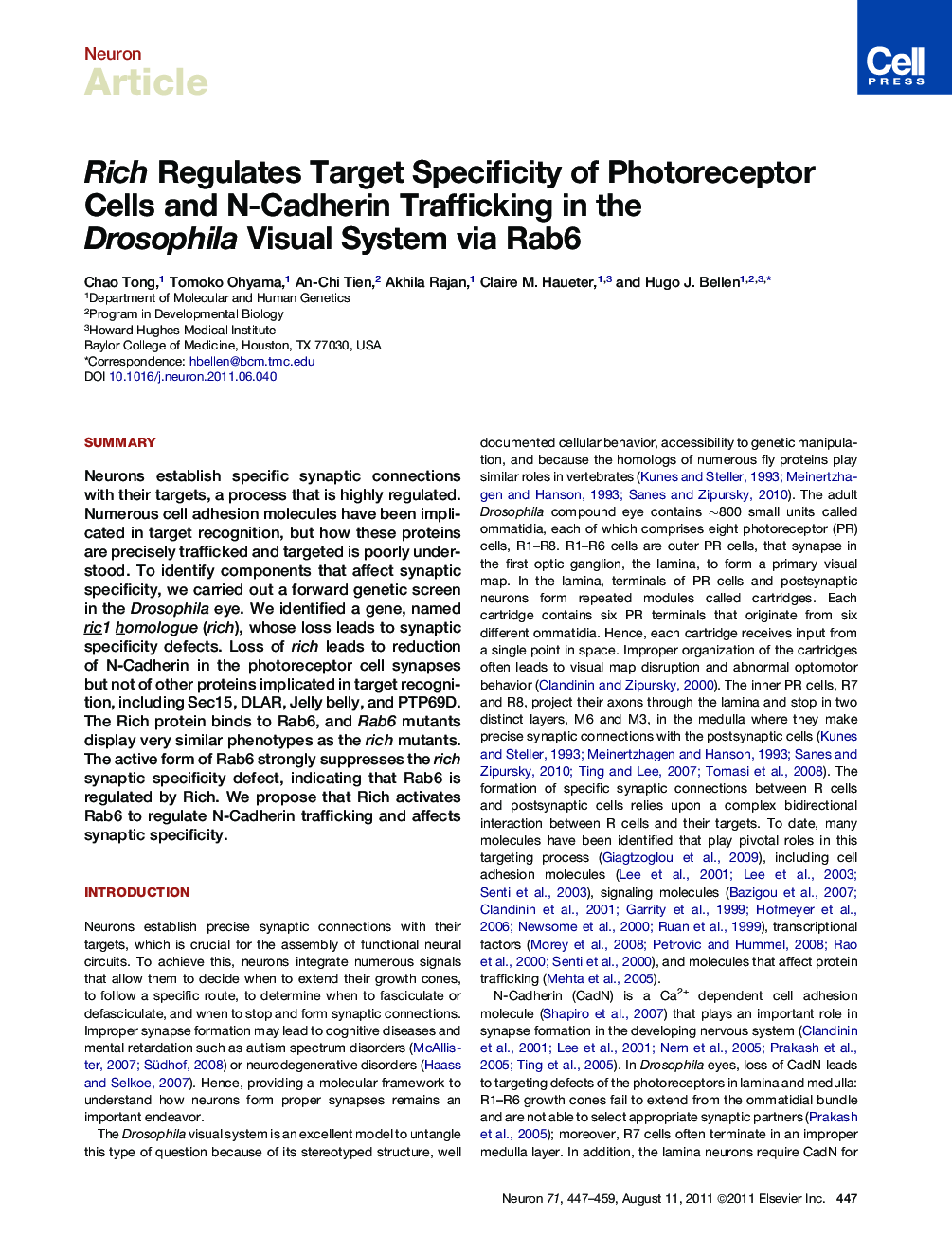| Article ID | Journal | Published Year | Pages | File Type |
|---|---|---|---|---|
| 4321991 | Neuron | 2011 | 13 Pages |
SummaryNeurons establish specific synaptic connections with their targets, a process that is highly regulated. Numerous cell adhesion molecules have been implicated in target recognition, but how these proteins are precisely trafficked and targeted is poorly understood. To identify components that affect synaptic specificity, we carried out a forward genetic screen in the Drosophila eye. We identified a gene, named ric1 homologue (rich), whose loss leads to synaptic specificity defects. Loss of rich leads to reduction of N-Cadherin in the photoreceptor cell synapses but not of other proteins implicated in target recognition, including Sec15, DLAR, Jelly belly, and PTP69D. The Rich protein binds to Rab6, and Rab6 mutants display very similar phenotypes as the rich mutants. The active form of Rab6 strongly suppresses the rich synaptic specificity defect, indicating that Rab6 is regulated by Rich. We propose that Rich activates Rab6 to regulate N-Cadherin trafficking and affects synaptic specificity.
► Identify rich that affect synaptic specificity in the Drosophila eye ► Rich is expressed in the developing eye and colocalizes with Rab6 ► Rich regulates Rab6 activity to mediate PR synaptic specificity ► Loss of rich and Rab6 leads to reduction of N-Cadherin in the PR cell synapses
